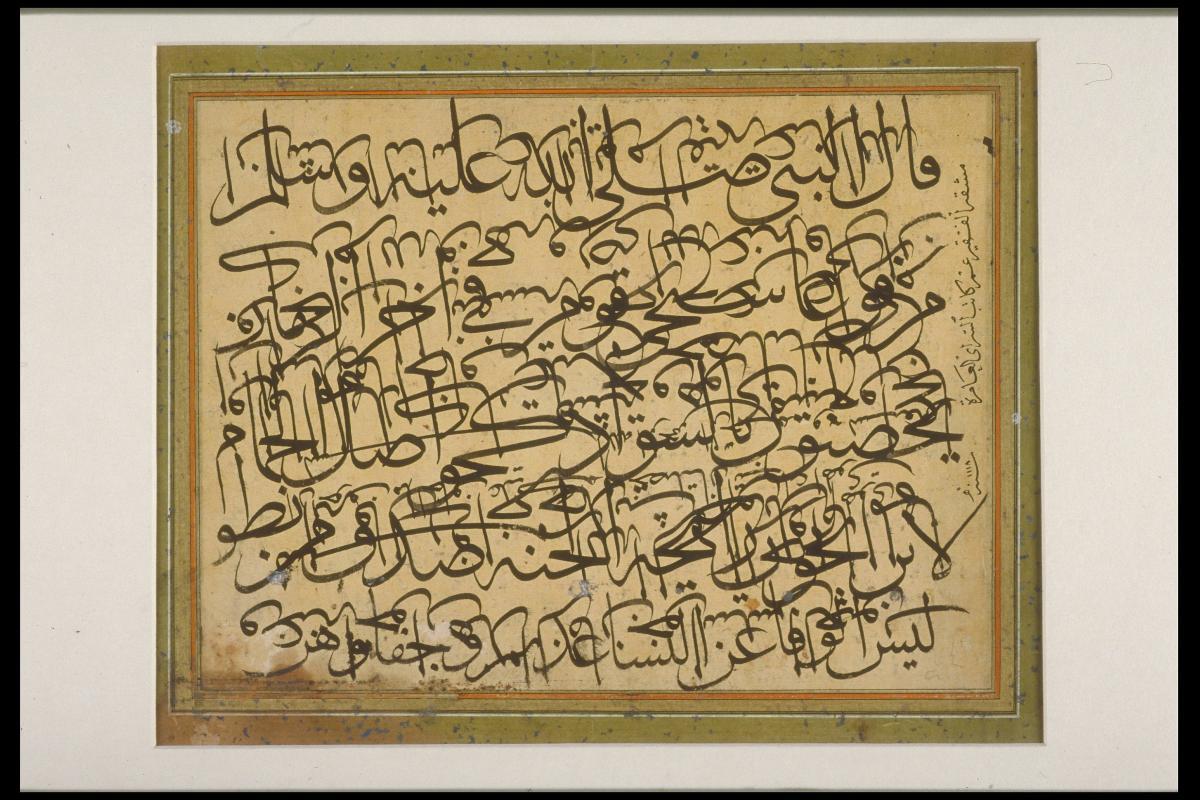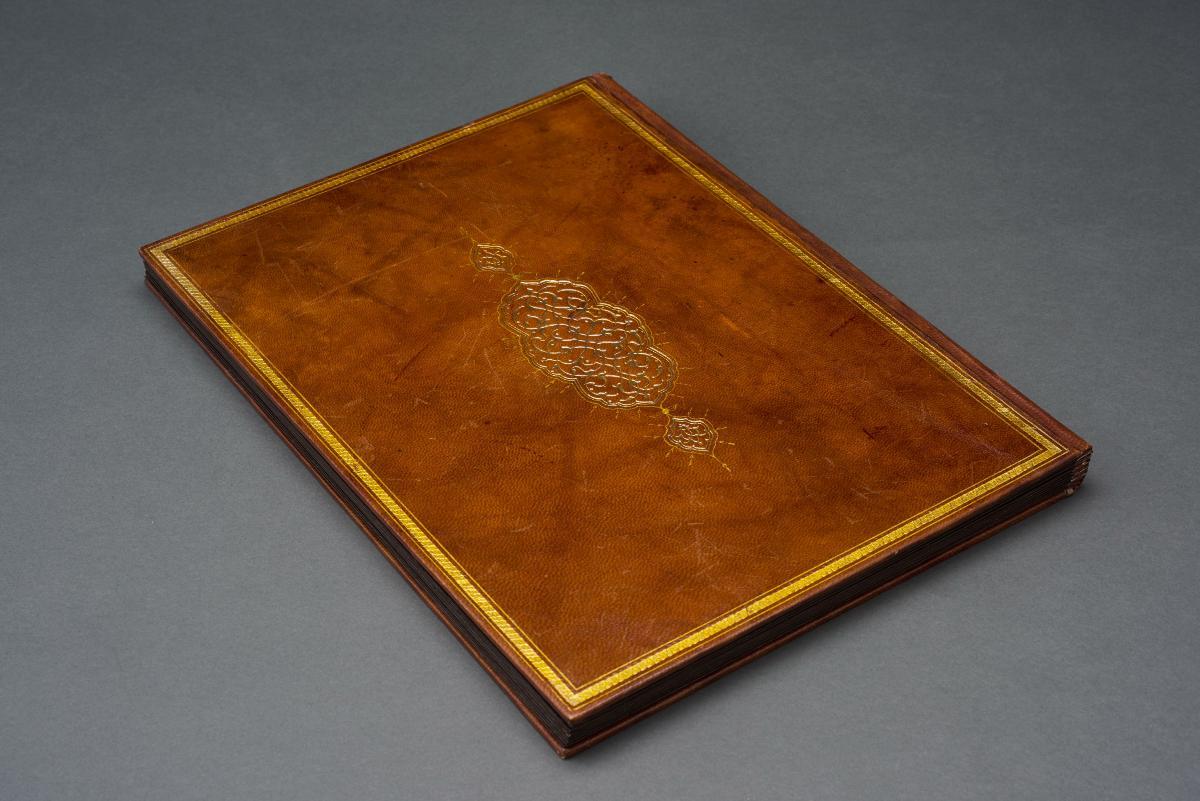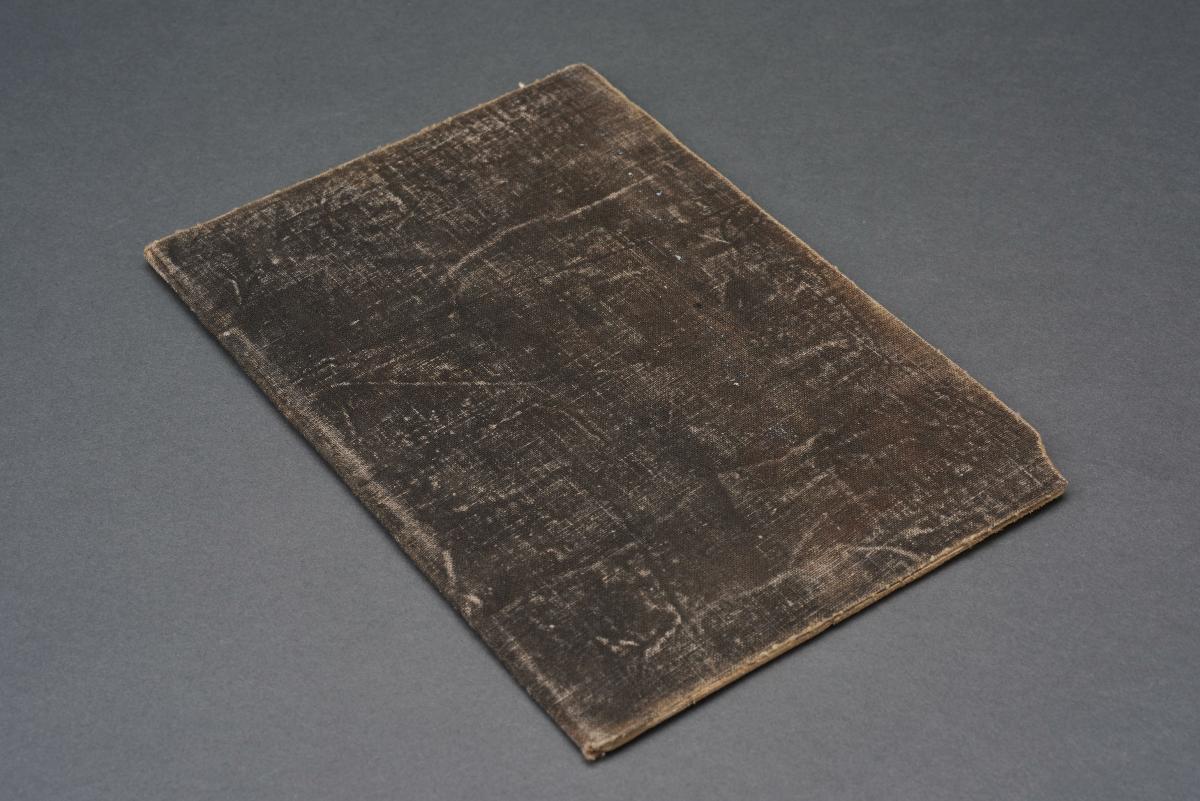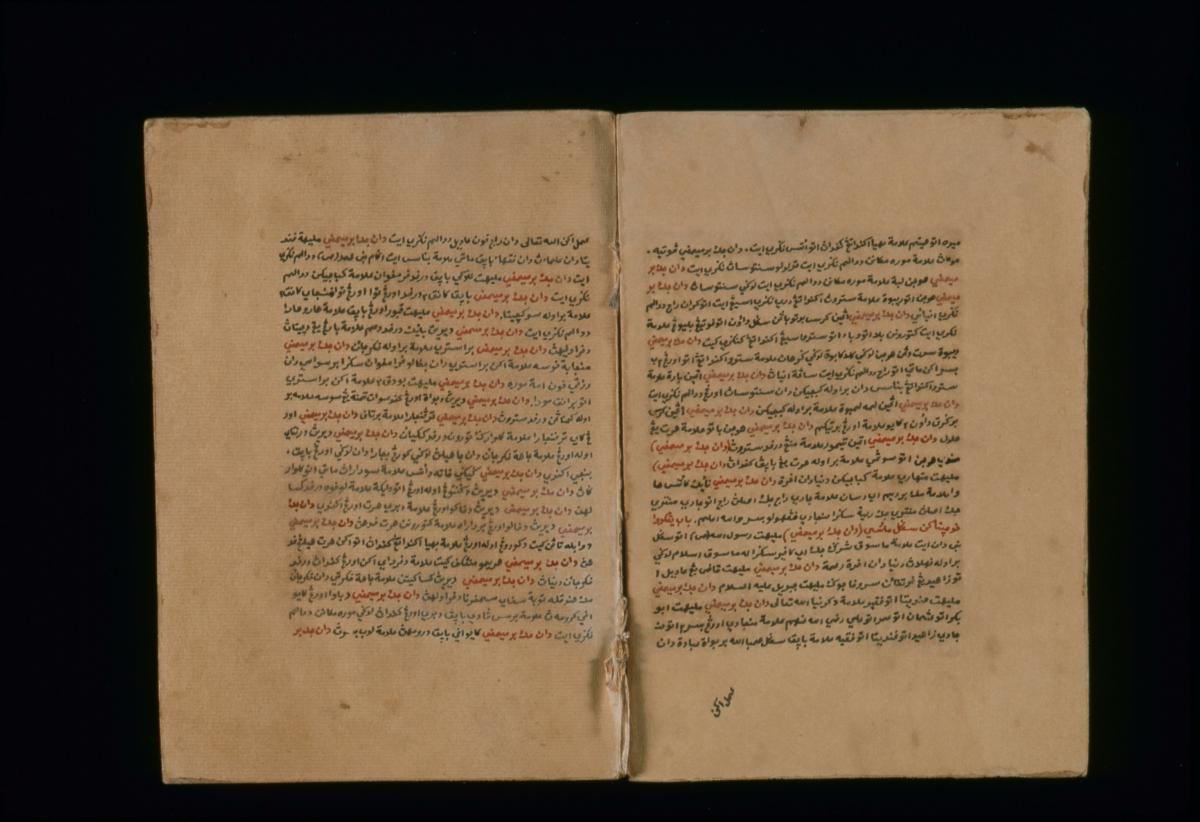A practice sheet such as this piece basically functions as a place for calligraphers to test the pen, the consistency of the ink, the style and the sizes of the scripts. It was also usual for the calligrapher to use all the available space on a sheet of paper, thus earning it the term ‘karalama’ in Turkish, which literally means ‘blackening’. This piece contains two cursive scripts, thulth and naskh. The signature written in Tawqi, which is another cursive script reads: "Copied by the one needy (for God's favour) Omer Katib Scribe of the Royal Palace.”Calligraphy has always been considered the noblest and most featured art in the world of Islam as it transmits the Divine Revelations of God. The pious desire to beautify the Word of God was a central factor in the development of calligraphy in the Islamic world. In the different regions of the Islamic world, different scripts evolved.















